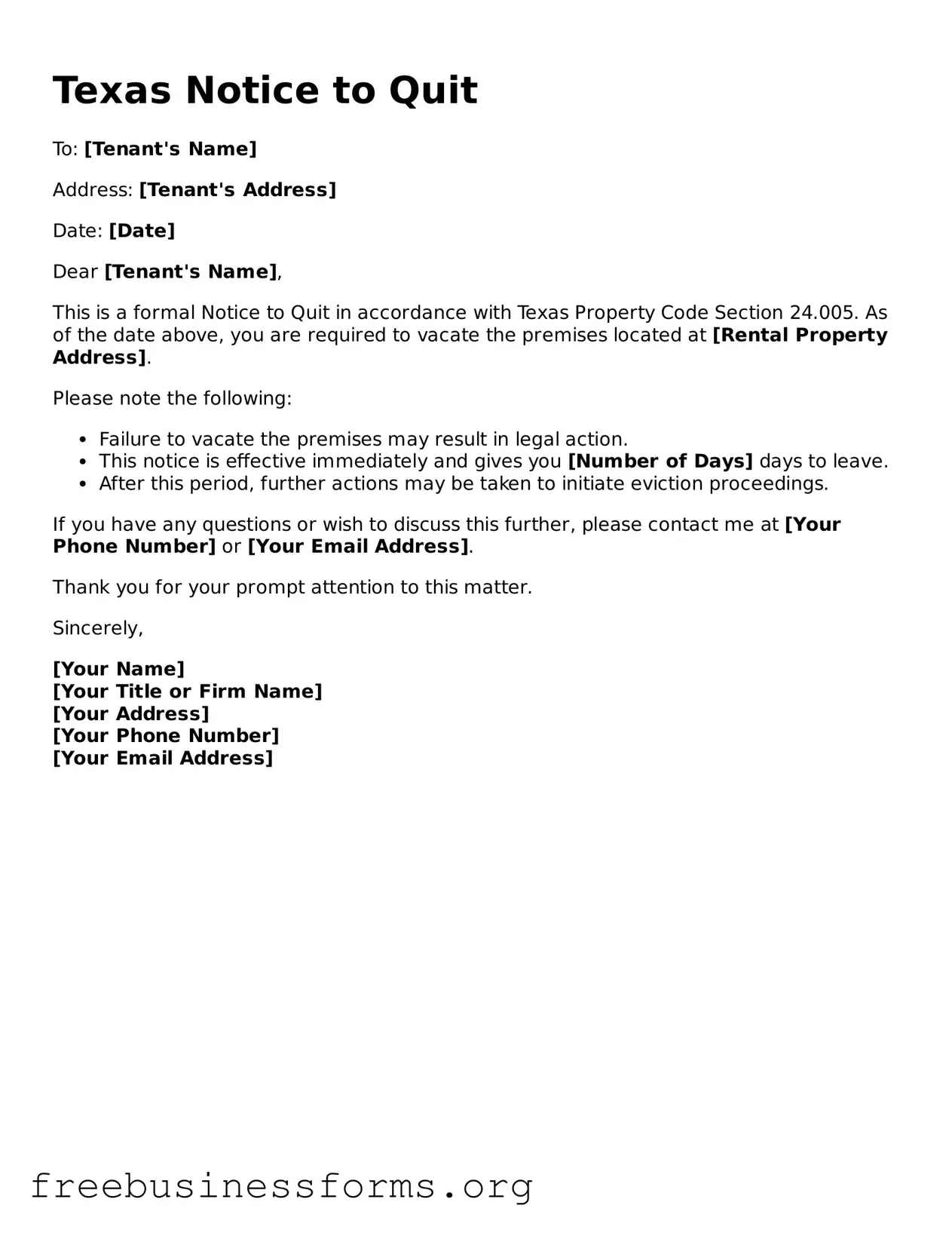Blank Notice to Quit Template for Texas
The Texas Notice to Quit form is a legal document that a landlord uses to inform a tenant that they must vacate the rental property. This form serves as a formal request for the tenant to leave, often due to non-payment of rent or lease violations. Understanding this form is crucial for both landlords and tenants to navigate the eviction process effectively.
Open Form Here
